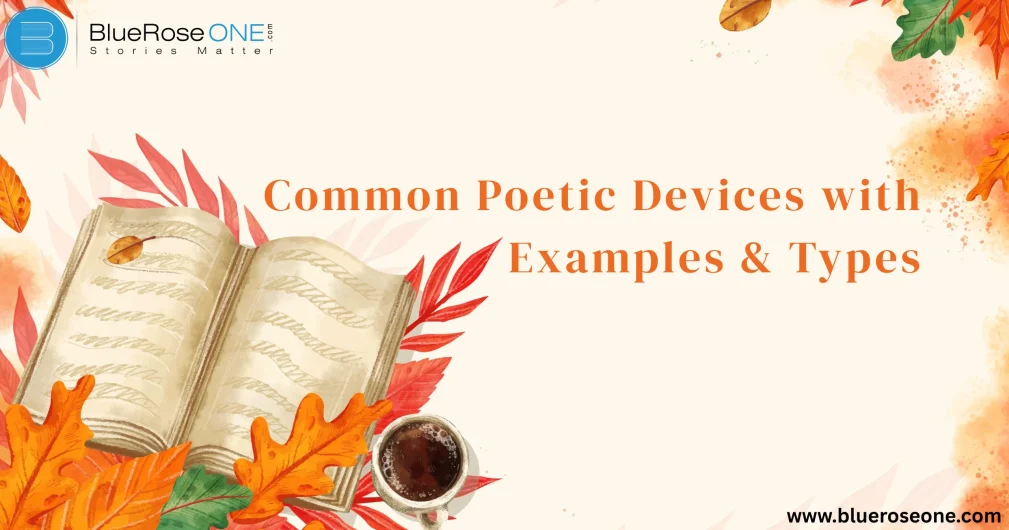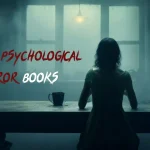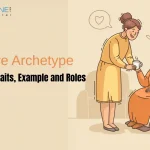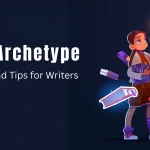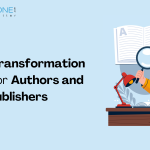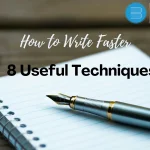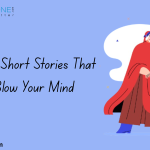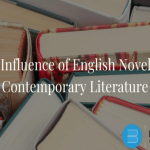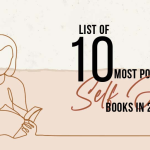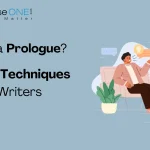Ever read a poem and thought, “Wow, that line just hits differently”? That magical punch often comes from poetic devices those clever tools poets use to stir your soul, paint vivid images, or make their words sing. Whether you’re a student, writer, or poetry lover, understanding these devices can help you see beyond the surface and truly feel the poem.
Let’s break down the most common poetic devices with examples and types so you can identify and appreciate them with ease.
Major Types of Poetic Devices
Sound-Based Devices
These devices focus on the musical quality of poetry. They’re what make a poem memorable, rhythmical, and pleasing to the ear.
Alliteration
Alliteration is a poetic device that involves the repetition of initial consonant sounds in closely positioned words, often used to create rhythm, mood, or emphasis. It is commonly found in poetry, tongue twisters, and even brand names.
For example, in the line “She sells seashells by the seashore,” the repeated “s” sound enhances the musicality and flow of the phrase. Alliteration draws attention to specific words or themes, making the language more memorable and engaging for readers.
Example: “Peter Piper picked a peck of pickled peppers.”
Why It Works: It creates a musical effect and draws attention to specific lines or emotions.
You may also like: Where the Red Fern Grows: Book Summary & Themes
Assonance
Assonance is a poetic device that uses the repeating of vowel sounds inside adjacent words to produce internal rhyme and musicality.
It frequently improves the mood or rhythm of a line, making it more engaging or emotionally meaningful. Unlike rhyme, assonance focuses primarily on vowel sounds rather than full syllables.
For example, Edgar Allan Poe’s phrase “Hear the mellow wedding bells” uses a repeated “e” sound to produce a smooth, harmonic tone that suits the images.
Example: “The early bird catches the worm.”
Why It Works: It builds internal rhyming and enhances the mood or flow.
Consonance
Consonance is a poetic device characterized by the repetition of consonant sounds within or at the end of words in close proximity.
Unlike alliteration, which emphasizes initial consonant sounds, consonance focuses on recurring sounds regardless of position. This technique adds rhythm, musicality, and emphasis to poetry.
For example, in the phrase “pitter-patter”, the repeated t and r sounds create a pleasing auditory effect. Poets use consonance to unify lines and enhance the mood or tone of a poem.
Example: “Pitter-patter, the rain made a clatter.”
Why It Works: It reinforces rhythm and unites lines through sound.
You may also like: Top 100 Words Starts with V to Improve Your English Writing and Speaking
You may also read: The Selection Series in Order: Full Book Guide
Onomatopoeia
Onomatopoeia is a poetic device in which a word imitates the natural sound it represents, so improving the sensory experience of the poem. Buzz, clang, whisper, and sizzle are some common examples.
Poets utilize onomatopoeia to generate vivid imagery and immerse readers into the situation using sound. For example, in Alfred Lord Tennyson’s “Come Down, O Maid,” the word murmur evokes the soothing sound of a brook, making the poem more immersive and emotionally resonant.
Example:
“Buzz,” “crash,” “sizzle,” “bang.”
Why It Works: Brings the scene alive with auditory imagery.
Rhyme & Internal Rhyme
Rhyme is the recurrence of similar-sounding words at the conclusion of lines in poetry, resulting in a melodic or lyrical aspect. Internal rhyming, however, occurs within a single line rather than at line breaks.
Both improve the poem’s rhythm and memorability. For example, the phrase “Once upon a midnight dreary, while I pondered, weak and weary” in Edgar Allan Poe’s “The Raven” demonstrates the internal rhyme between “dreary” and “weary.” These devices increase engagement and emphasize thematic components.
Example: “Once upon a midnight dreary, while I pondered, weak and weary…” – Edgar Allan Poe
Why It Works: Rhyme enhances memorability and structure.
You may also like: 10 Classic Flat Character Examples in Literature and Film
You may also read: 150 4 Syllable Words: Complete List with Meanings and Examples
Repetition
Repetition is a powerful poetic device used to emphasize a feeling, create rhythm, or reinforce a theme by repeating words, phrases, or lines. Poets often use repetition to make their verses more memorable and emotionally impactful.
For example, in Edgar Allan Poe’s “The Bells,” the repeated use of the word “bells” mirrors the clanging sound and builds a musical quality. Repetition can appear in various forms such as anaphora, epiphora, or refrain, depending on its placement in a poem.
Example: “And miles to go before I sleep,
And miles to go before I sleep.” – Robert Frost
Why It Works: It creates rhythm, emphasis, and emotional power.
Meaning-Based Poetic Devices
These focus on figurative language and deeper interpretation.
Metaphor
Metaphor is a fundamental poetic device that compares two unrelated things by stating one is the other, without using “like” or “as.” It deepens meaning and evokes vivid imagery.
For example, in Shakespeare’s “All the world’s a stage,” the world is metaphorically compared to a stage, highlighting the roles people play in life.
Metaphors help poets express abstract ideas more tangibly, enhancing emotional impact and enabling readers to connect with deeper symbolic layers of meaning.
Example: “Time is a thief.”
Why It Works: It reveals deeper meanings and abstract connections.
You may also like: Negative Adjectives to Describe People: Examples and Meanings
Simile
A simile is a poetic device that directly contrasts two unlike things, utilizing the words “like” or “as” to produce vivid pictures and enhance meaning. It helps readers visualize concepts by connecting new ones to familiar ones.
For example, in the expression “as brave as a lion,” courage is compared to the strength of a lion. Similes are commonly employed in poetry and prose to increase emotional impact and produce vivid, unforgettable descriptions in a few lines.
Example: “She was as brave as a lion.”
Why It Works: Similes clarify and strengthen imagery.
Symbolism
Symbolism is a powerful poetic device where objects, characters, or actions represent deeper meanings beyond their literal sense.
Poets employ symbolism to subtly and multi-layeredly express difficult feelings, thoughts, and concepts. For instance, the diverging roads represent life choices in Robert Frost’s “The Road Not Taken.” Symbolism is an essential tool for tying the poem’s surface to its underlying meaning since it enhances the poem’s meaning and permits readers to interpret it in their own unique ways.
Example: A dove symbolizes peace.
Why It Works: It adds layered meanings and depth.
You may also like: 150+ Positive Words That Start with O to Brighten Your Vocabulary
Irony
Irony is a potent poetic element that draws attention to the gap between appearance and reality, frequently inspiring astonishment or introspection. Irony in poetry might be situational, dramatic, or verbal; each offers a unique twist that subverts readers’ preconceptions.
For example, the sarcastic statement, “It is sweet and fitting to die for one’s country,” is used to denounce the atrocities of war in Wilfred Owen’s “Dulce et Decorum Est.” Poetic expression gains emotional depth, complexity, and a critical edge from such use.
Example: A fire station burns down.
Why It Works: It adds humor or poignancy through contrast.
Hyperbole
Hyperbole is a poetry device that uses deliberate exaggeration to emphasize or create dramatic effect. Poets utilize hyperbole to convey strong emotions, vivid images, and humor.
It draws a reader’s attention by exaggerating reality, making the subject more memorable.
For example, in the sentence “I’ve told you a million times,” the speaker exaggerates to express exasperation or emphasis rather than the precise reality. Hyperbole is used in both ancient and modern poetry to heighten emotional impact and tone.
Example: “I’ve told you a million times!”
Why It Works: Emphasizes a point or emotion.
You may also read: Archangels Names List: Meanings, Powers, and Symbolism
Personifiction
Personification is a poetic device that attributes human qualities to non-human entities, such as animals, objects, or abstract ideas. This technique helps create vivid imagery and emotional connection in poetry.
For example, in the line “The wind whispered through the trees,” the wind is given the human ability to whisper. Personification allows poets to animate the inanimate, deepening the reader’s engagement and making descriptions more relatable. It is commonly used in both classical and contemporary poetry to evoke mood and imagination.
Example: “The wind whispered through the trees.”
Why It Works: It brings nature or objects to life, evoking stronger visuals.
Structural Poetic Devices
These affect the form, layout, and pacing of a poem.
Enjambment
Enjambment is a poetic device where a sentence or phrase flows beyond the end of a line or stanza without a pause or punctuation. It creates a sense of movement and can reflect natural speech patterns, urgency, or tension.
Often used to surprise the reader or alter meaning, enjambment allows poets to emphasize particular words or ideas. For example, in William Wordsworth’s poetry, enjambment enhances rhythm and continuity: “My heart leaps up when I behold / A rainbow in the sky.”
Example: “The sun hovered Above the horizon, blinking red.”
Why It Works: Creates suspense and a natural flow.
You may also like: 400 Adjectives That Start with L to Level Up Your Vocabulary
Caesura
Caesura is an important poetic element that involves a purposeful stop or break within a line of poetry, which is usually indicated by punctuation such as commas, dashes, or periods.
It establishes a natural rhythm, accentuates specific phrases or concepts, and mimics natural speaking patterns. Caesuras can be medial (in the center), initial, or terminal, depending on their location.
For example, in Alexander Pope’s statement “To err is human; || to forgive, divine,” the pause emphasizes the difference between human weaknesses and heavenly love.
Example: “To be, or not to be – that is the question.”
Why It Works: It controls rhythm and emphasizes meaning.
Anaphora
Anaphora is a powerful poetic device that involves the deliberate repetition of a word or phrase at the beginning of successive lines, clauses, or sentences. This technique is often used to create rhythm, build emotional intensity, and emphasize a central idea.
A famous example comes from Martin Luther King Jr. ‘s speech: “I have a dream…” repeated at the start of several sentences. In poetry, anaphora adds musicality and reinforces meaning, making it a compelling tool in both classic and modern verse.
Example: “I have a dream…” – Martin Luther King Jr.
Why It Works: Builds emotion and unity.
Epistrophe
Epistrophe is a powerful poetry device that repeats a word or phrase at the conclusion of successive lines, phrases, or sentences.
This strategy stresses essential themes and produces a powerful rhythmic effect. Epistrophe, which is commonly utilized in poetry, speeches, and writing, has the capacity to elicit emotion and increase memorability.
For example, in Abraham Lincoln’s speech: “…of the people, by the people, and for the people,” the repeated phrase emphasizes democratic values, making the message both impactful and lasting.
Example: “See no evil, hear no evil, speak no evil.”
Why It Works: Emphasizes a theme or idea.
You may also like: 200 Adjectives That Start with A to Boost Your Writing
Juxtaposition
Juxtaposition is a poetic device where two contrasting ideas, images, or characters are placed side by side to highlight their differences or create a striking effect. Poets use juxtaposition to provoke thought, build tension, or enhance emotional impact.
For example, in William Blake’s “The Tyger”, the fierce tiger is juxtaposed with the gentle lamb, symbolizing the duality of creation. This contrast deepens the poem’s meaning and invites readers to reflect on the complexity of existence.
Example: “It was the best of times, it was the worst of times.” – Charles Dickens
Why It Works: Highlights differences and deepens meaning.
How Poets Use Poetic Devices to Enhance Meaning
Poets masterfully employ poetic elements to enhance the meaning and emotional effect of their works. Poets can use devices like metaphor and simile to create vivid parallels that help readers grasp complex emotions or abstract ideas through familiar pictures.
Comparing time to a “thief” creates a sense of urgency and loss. Alliteration and assonance improve the musicality of a poem, making lines more memorable and engaging.
Symbolism provides depth to meaning a rose can represent love, beauty, or even mortality depending on the situation. Enjambment, or the prolongation of a sentence after the line break, can add suspense or stress a significant topic.
Repetition emphasizes themes or feelings, such as longing or despair, whereas imagery engages the reader’s senses, creating mental images. These tools work together to turn simple language into rich, expressive art.
Rather than explicitly expressing emotions, poets use these tactics to elicit feelings and encourage thought, allowing readers to understand and connect with the poem on a personal level.
You may also like: 100+ Adjectives That Start with T to Boost your Writing
Poetic Devices in Famous Poems
- “The Raven” by Edgar Allan Poe: Repetition, rhyme, alliteration, personification
- “Ozymandias” by Percy Bysshe Shelley: Irony, imagery, symbolism
- “Do Not Go Gentle into That Good Night” by Dylan Thomas: Villanelle structure, repetition, metaphor
These works show how devices create rhythm, message, and emotion, turning simple stanzas into unforgettable masterpieces.
Tips for Identifying Poetic Devices
- Read aloud: Sound devices are easier to spot when you hear them.
- Look for figurative language: Is something being compared or exaggerated?
- Check punctuation and line breaks: Enjambment and caesura can be subtle but powerful.
- Think about mood and tone: Devices often build atmosphere.
You may also like: 150 Useful Tone Words to Describe Tone | Explanation with Examples
Why Learning Poetic Devices Matters
Whether you’re writing or reading poetry, understanding these tools helps you:
- Analyze poems more deeply
- Appreciate the craft behind the lines
- Improve your own writing style
- Communicate emotions and ideas better
It’s like having a secret decoder ring for poetic meaning!
Conclusion
Poetic devices are the heartbeat of poetry. They add flavor, form, rhythm, and resonance to words that might otherwise fall flat. From sound to structure to symbolism, each device serves a unique role in elevating a poem’s impact.
So the next time you read a poem, slow down. Look for the tools behind the art. You’ll not only understand it better, you’ll feel it more deeply.
Frequently Asked Questions
Rhyme is one of the most common and widely used poetic devices because of its rhythmic and memorable effect.
Absolutely! Most poems use several devices simultaneously to create layers of meaning and emotion.
Not at all. Modern poetry, song lyrics, and even prose can include poetic devices to enhance expression.
Yes! Whether you write poetry, short stories, or even blog posts, poetic devices can enrich your writing and make it more engaging.

